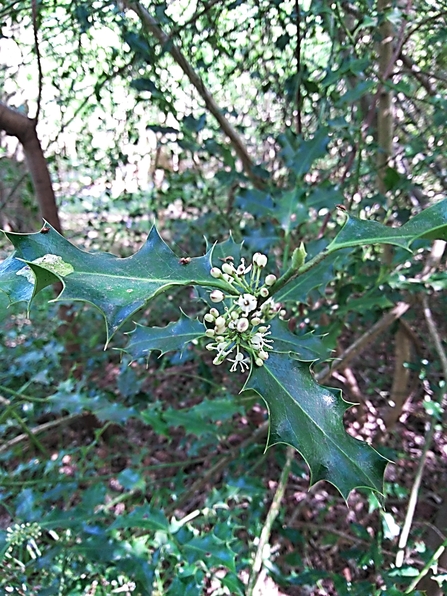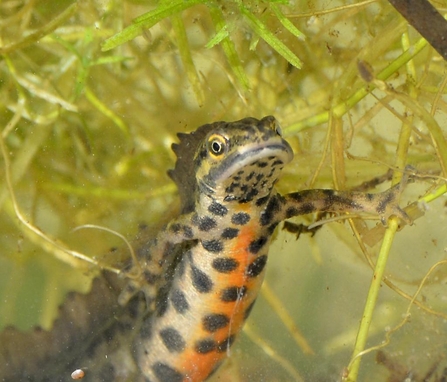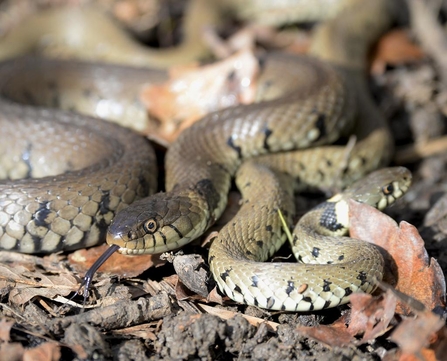While we humans must keep our distance, we like to lean a little closer to nature to wonder at her secrets. As we set off on our walk in the Kent countryside near our home, the dancing orange tip butterflies are easily seen along the verge, and then we catch a glimpse of pale blue scampering up and over the hedge. The newly hatched holly blue butterflies have no time to wait, we see one taking nectar from the roadside forget-me-nots; pale sky blue wings with tiny black dots on the underwing. A lack of dark colouring on the edges of upper wings indicates a male.
Funny times to be thinking of holly and ivy – but those are the plants the females will be searching for. She will lay the eggs of the first spring brood on holly flower buds while the females of the late summer brood will lay eggs on the buds of ivy. These lovely butterflies might visit your garden if you encourage them by growing lady’s-smock and honesty for the orange tip, holly and ivy for the holly blue, and nectar-rich plants for pollinating insects.
Kent Wildlife Trust is encouraging the public to take a pledge for insects like these incredible butterflies and when you do you’ll receive a free guide on how to take better Action for Insects.


